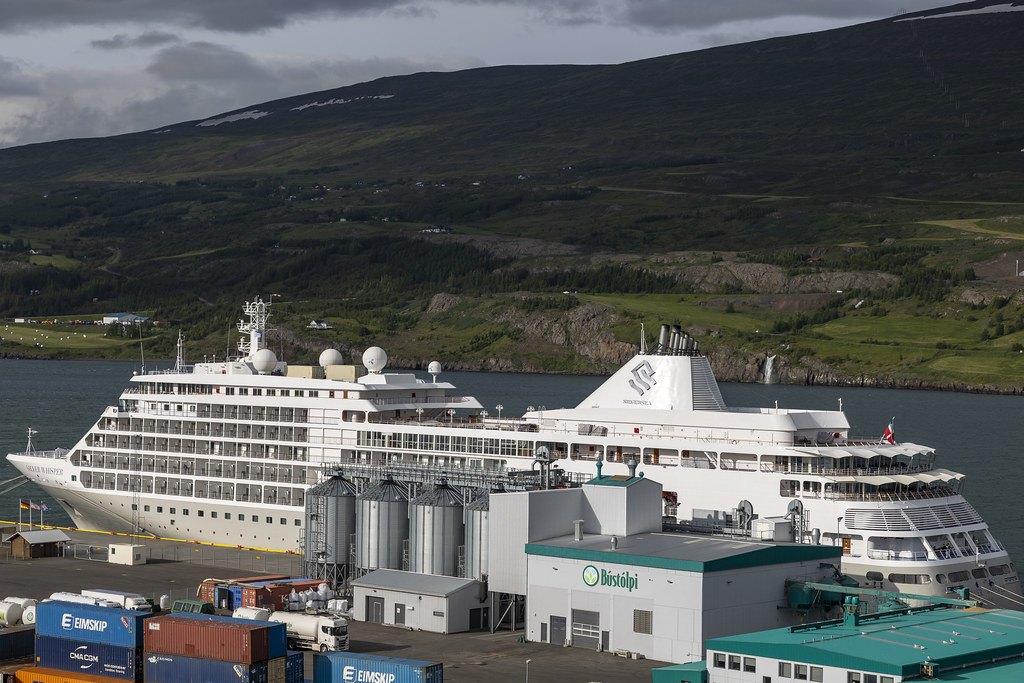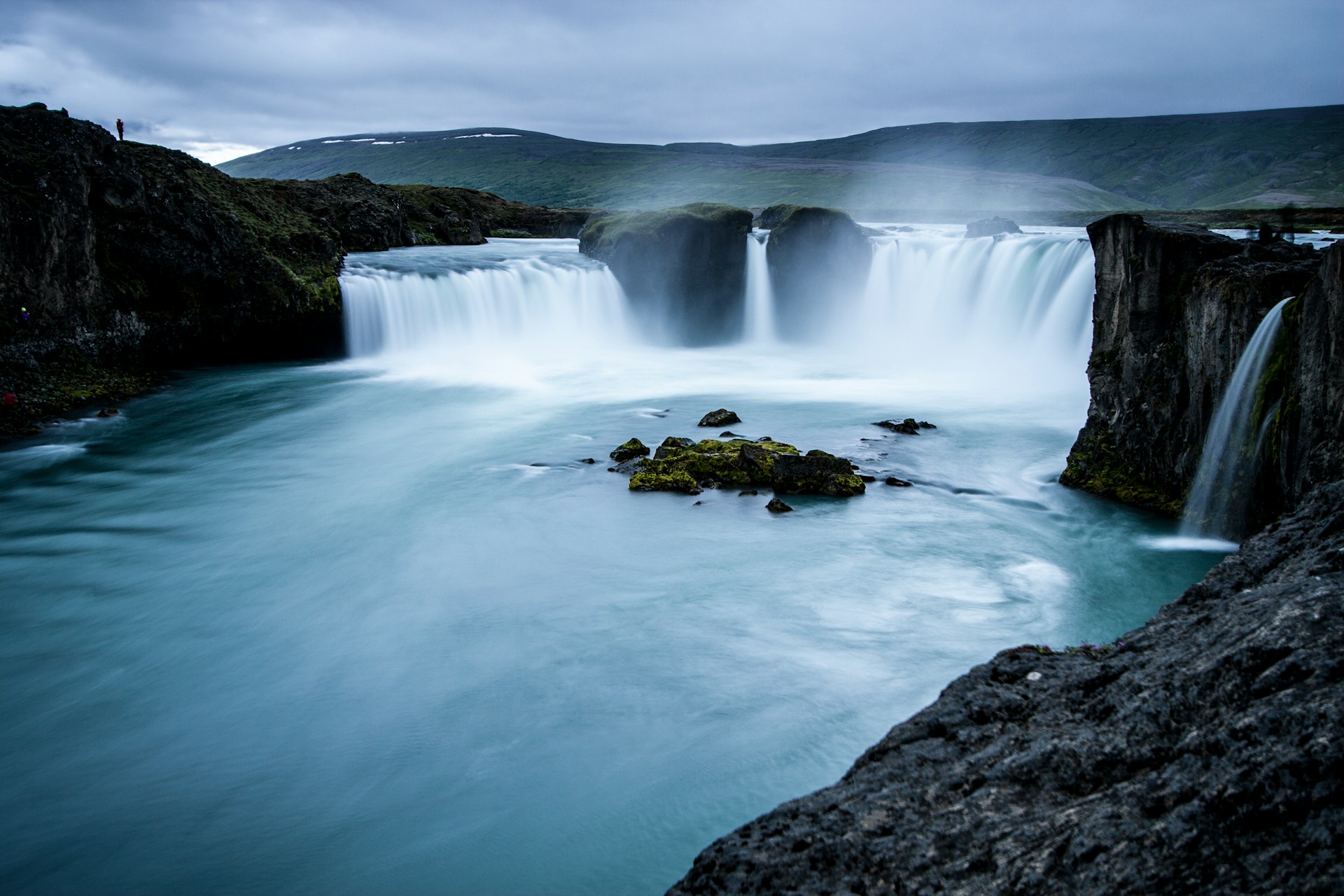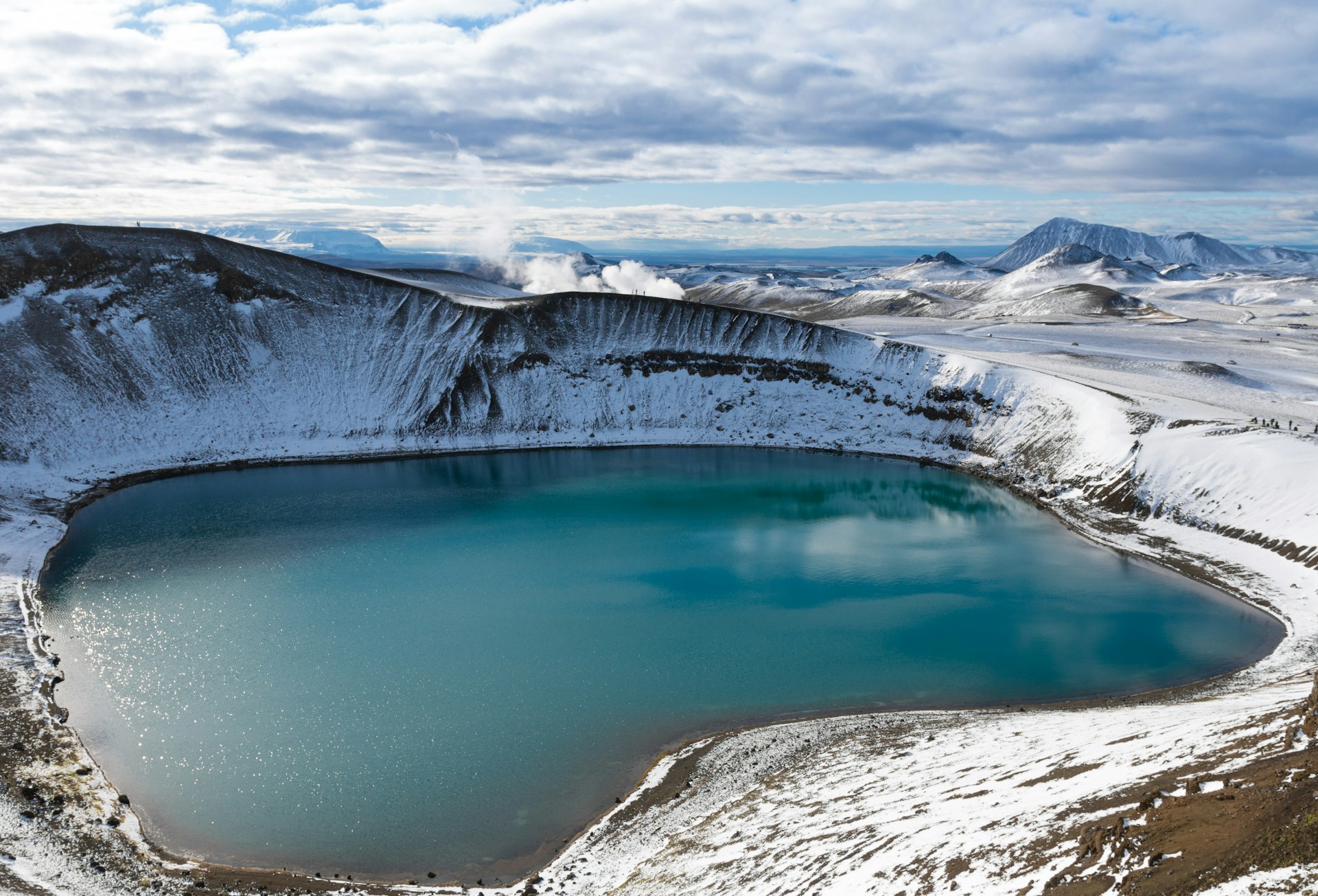Campsites Along Iceland’s Westfjords: A Rugged Adventure
Your guide to camping in Iceland’s Westfjords—top campsites, facilities, and tips for exploring one of the country’s most rugged regions.
Iceland has quickly become one of the most exciting cruise destinations in the world. This land of fire and ice offers stunning waterfalls, geothermal hot springs, dramatic fjords, and unique wildlife. The two main cruise ports of Reykjavik and Akureyri each provide different experiences and access to Iceland's natural wonders.
Reykjavik is the capital and largest city of Iceland. The Reykjavik cruise port is located right in the heart of the city, making it incredibly convenient for cruise passengers. When your ship docks at Skarfabakki Port or the Old Harbor, you'll find yourself just a short distance from downtown attractions.
The main cruise terminal at Skarfabakki is about 3 kilometers from the city center. While this might sound far, getting into town is quite simple. You have several transportation options available when you arrive.
Shuttle buses are often provided by cruise lines and will take you directly to the city center. These are usually the most convenient option and sometimes included in your cruise fare. Taxis are readily available at the port and can get you downtown in about 10 minutes. Public buses also run from near the port to various parts of the city, offering a budget-friendly option.
Many cruise visitors choose to walk if the weather is nice. The walk takes about 30 to 40 minutes and gives you a chance to see more of the city along the way.

Reykjavik offers plenty of attractions within easy reach of the cruise port. The city center is compact and walkable, making it perfect for a day visit. Hallgrimskirkja Church is the most recognizable landmark in Reykjavik. This towering church offers an observation deck with panoramic views of the city and surrounding mountains. The architecture is inspired by Iceland's basalt lava flows, making it uniquely Icelandic.
The Harpa Concert Hall is a stunning modern building with a glass facade that reflects the harbor and sky. Even if you don't attend a performance, the building itself is worth visiting for its incredible design and waterfront location.
Laugavegur is the main shopping street in Reykjavik. Here you'll find local boutiques, souvenir shops, restaurants, and cafes. It's the perfect place to pick up Icelandic wool sweaters, unique jewelry, or local delicacies. The Sun Voyager sculpture sits along the waterfront and is one of the most photographed spots in the city. This steel sculpture resembles a Viking ship and makes for beautiful photos, especially with the mountains in the background.

The Golden Circle tour is the most popular excursion from Reykjavik. This route includes three major attractions that showcase Iceland's natural wonders. Thingvellir National Park is where you can see the rift between the North American and Eurasian tectonic plates. Geysir geothermal area features hot springs and the famous Strokkur geyser that erupts every few minutes. Gullfoss waterfall is a powerful two-tiered cascade that creates rainbows on sunny days.
The Blue Lagoon is another favorite destination for cruise passengers. This geothermal spa features milky blue waters rich in minerals. The warm water and silica mud are said to have healing properties. Many visitors consider it a must-do experience in Iceland, though it requires advance booking.
Whale watching tours depart from Reykjavik's Old Harbor. The waters around Iceland are home to minke whales, humpback whales, dolphins, and porpoises. Tours typically last about three hours and provide warm overalls to keep you comfortable on the water.
If you have time for a meal in Reykjavik, you'll find plenty of options. The city has developed a strong food scene with restaurants ranging from casual to fine dining.
Traditional Icelandic dishes include lamb soup, fresh fish, and skyr, which is similar to yogurt. For the adventurous, you can try fermented shark or dried fish. Many restaurants also serve excellent seafood, including langoustine, arctic char, and cod.
Hot dogs are surprisingly popular in Iceland, and the stand near the harbor called Baejarins Beztu Pylsur is famous among locals and tourists alike. For a quick and tasty meal, this is a great option.

Akureyri is Iceland's second-largest city and the capital of North Iceland. Located at the end of Eyjafjörður fjord, this charming town offers a more intimate Icelandic experience compared to Reykjavik. The cruise port is centrally located, with most ships docking right in town, making it easy to walk to major attractions.
The port area has improved facilities in recent years, with a terminal building offering tourist information, restrooms, and sometimes local vendors selling handicrafts and souvenirs. The compact size of Akureyri means you can explore much of the town on foot during your port day.
Akureyrarkirkja Church sits on a hill overlooking the town and fjord. This beautiful church features stunning stained glass windows and offers lovely views from its location. The walk up to the church takes about 10 minutes from the port and provides excellent photo opportunities of the colorful houses below.
The Botanical Garden in Akureyri is a hidden gem showcasing plants from around the world that can survive in this northern climate. Despite being located just 40 miles from the Arctic Circle, the garden displays an impressive collection of flowers and plants during the summer months. Entry is free, making it a budget-friendly attraction.
Akureyri town center features charming streets lined with shops, cafes, and restaurants. The pedestrian-friendly downtown area includes the Culture House museum, various art galleries, and plenty of opportunities to sample local Icelandic food. Walking through town gives visitors a genuine feel for everyday Icelandic life outside the tourist bustle of Reykjavik.

Godafoss, the "Waterfall of the Gods," ranks among Iceland's most beautiful waterfalls and sits just 45 kilometers east of Akureyri. The name comes from a pivotal moment in Icelandic history when the lawspeaker Þorgeir Ljósvetningagoði threw his statues of pagan gods into the waterfall around the year 1000 AD after Christianity was adopted as Iceland's official religion.
The waterfall spans about 30 meters wide and drops 12 meters into the Skjálfandafljót river. Unlike many Icelandic waterfalls, Godafoss is easily accessible with a short walk from the parking area. Viewing platforms on both sides of the river offer different perspectives. The east bank gives you the classic horseshoe view, while the west bank puts you closer to the powerful cascade. The mist from the falls creates rainbows on sunny days.
Most cruise ship excursions to Godafoss last about 3-4 hours total, including travel time. This makes it an ideal half-day trip that still leaves time to explore Akureyri town. Some tours combine Godafoss with a stop at the Laufás turf house museum or a brief visit to the charming town of Húsavík.

The Lake Mývatn area is North Iceland's geological wonderland and makes an excellent full-day excursion from Akureyri. Located about 90 kilometers east, the region showcases volcanic landscapes that look like something from another planet. The name Mývatn means "Midge Lake," and true to its name, clouds of small flies appear in summer. They don't bite, but they can be annoying. Bringing a head net makes the experience more pleasant.
The pseudo-craters at Skútustaðir formed when lava flowed over wetlands, causing the water beneath to boil and explode through the cooling lava. These formations are unique to Iceland and a few other locations worldwide. Walking paths let you explore among the craters and enjoy views across the lake.
Dimmuborgir, or "Dark Castles," is a labyrinth of lava formations that create eerie towers, caves, and arches. Icelandic folklore says this is where the hidden people (elves) live, and walking through the formations, it's easy to imagine otherworldly beings inhabiting this strange landscape. Several marked trails wind through the area, ranging from short 10-minute walks to longer hikes.
The waters of Eyjafjörður fjord offer excellent whale watching opportunities, particularly for humpback whales. These waters are feeding grounds, and the humpbacks return each summer to feast on the abundant fish. Minke whales, harbor porpoises, and white-beaked dolphins also frequent the area.
Tours depart from the harbor in Akureyri and last about 3 hours. Operators provide warm overalls because even summer days get cold on the water. The success rate for seeing whales from Akureyri hovers around 95-98%, making it one of Iceland's most reliable whale watching locations. Unlike the open ocean tours from Reykjavik, the sheltered fjord usually means calmer waters and less seasickness.
Some tours visit Hrísey Island, the second-largest island off Iceland's coast. The island is home to fewer than 200 people and offers a glimpse into traditional island life. The bird sanctuary on the island attracts numerous species, and the tranquil atmosphere provides a stark contrast to mainland tourism.
Each of these three ports offers a different side of Iceland. Reykjavik gives you city culture mixed with easy access to major sights. Akureyri combines small-town charm with incredible natural attractions in North Iceland. Ísafjörður delivers remote beauty and dramatic fjord scenery.
An Iceland cruise lets you experience this extraordinary country without the hassle of driving on unfamiliar roads or changing hotels. Whether you're soaking in geothermal waters, chasing waterfalls, or watching whales, Iceland delivers unforgettable experiences at every port.
Pack your layers, charge your camera, and get ready for one of the most spectacular cruise destinations on Earth.
Book 6-12 months in advance for best prices and cabin selection. July and August departures sell out earliest. Early booking gives time to reserve Blue Lagoon and popular excursions. Last-minute deals appear 2-3 months before departure but with limited cabin choices. May and September have more availability than peak summer months.
Reykjavik is the best overall port with the most attractions, restaurants, and excursion options. It offers access to the Blue Lagoon, Golden Circle, and South Coast waterfalls. Akureyri is ideal for North Iceland attractions like Godafoss waterfall and Lake Mývatn. Ísafjörður provides the most remote and authentic experience with Dynjandi waterfall and Vigur Island. Each port has unique advantages depending on your interests.
Princess Cruises offers comprehensive Iceland itineraries with good shore excursion options. Celebrity Cruises provides upscale experiences with modern ships. Holland America focuses on longer, more in-depth Iceland cruises. Viking Ocean Cruises includes more port time and cultural immersion. Expedition cruise lines like Hurtigruten and Ponant reach smaller ports and remote areas. Choose based on your budget, desired amenities, and preferred itinerary length.
Yes, puffins are visible from May through mid-August at several locations. Vigur Island near Ísafjörður has large puffin colonies accessible by boat tour. Akureyri offers puffin watching tours. Some cruise ships also visit smaller islands with puffin colonies. July is peak puffin season. After mid-August, puffins leave Iceland for the winter. Book puffin tours in advance as they're popular with cruise passengers.